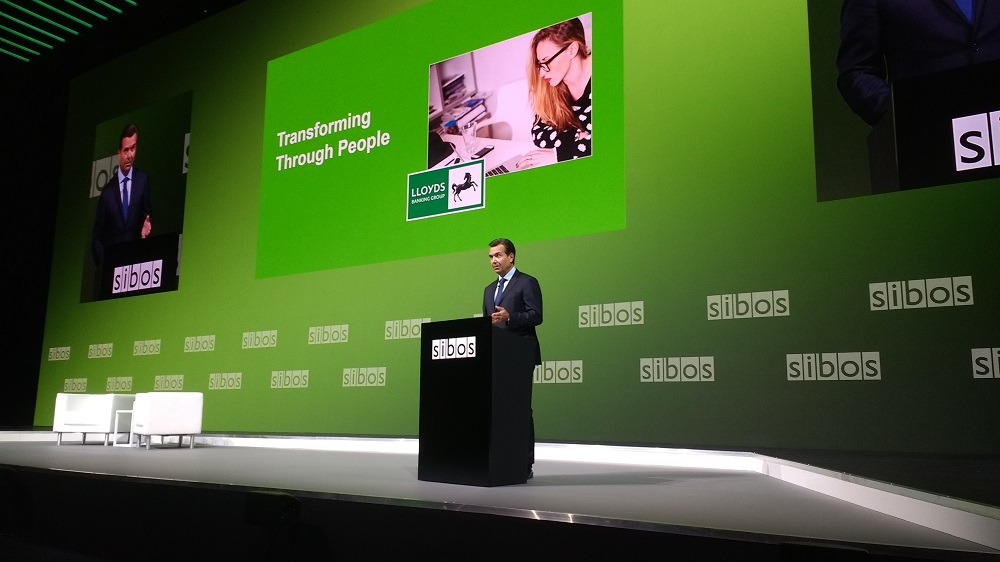Speaking at Sibos 2019 in London, Lloyds Banking Group CEO António Horta-Osório explained why workforce investment is vital to the bank's digital future

Lloyds Banking Group is investing in its workforce to support digital strategy (Credit: Flickr/MoneyBright www.moneybright.co.uk)
As part of the effort to deliver wholesale digital transformation across its business, Lloyds Banking Group has identified investment in its workforce as a key strategy to prepare for the future.
The UK’s biggest financial services provider is in the middle of a three-year transformation cycle aimed at sustaining its position in the modern commercial environment, where technology is driving rapid and sweeping changes throughout the industry.
With roughly 70,000 people working across the organisation, Lloyds faces a significant challenge to equip its workforce with the skills and environment required to adapt to these changes.
Speaking at Sibos 2019 in London yesterday, Lloyds Banking Group CEO António Horta-Osório discussed the scale of this challenge, why Lloyds has decided to concentrate on workforce investment, and some of the ways it has set about achieving this.
Lloyds workforce investment comes after difficult years of cost cutting
The Portuguese banker, who took the top job at Lloyds in 2011, amid the fallout of the financial crisis, explained the institution has undergone a number of strategic cycles under his stewardship to reposition itself as a bank equipped for the future.
“When I joined it would not be an understatement to say the bank was on its knees,” he said.
“We were three months away from running out of money, sitting on a bloated cost base and had £200bn of toxic assets on our balance sheet.”
At one stage, the bank was 43% owned by the UK government, and it took two successive strategic cycles of business simplification and cost cutting to return the group to private ownership in 2017.
The Lloyds boss added: “Our position of strength today is the result of years of transformation and adaptation.

“The first two strategic cycles were difficult for colleagues — it was a period of huge change, regular restructuring and frequent uncertainty.
“Some of the most testing times in recent history — from the turbulence of the financial crisis to the uncertainty of Britain leaving the EU — have taught me some valuable lessons about leadership and the value of people.”
Workforce investment to prepare its people for the workplace of the future
Now, as it looks ahead to a future driven by technological change, Lloyds has identified those individuals who make up its workforce as key assets, as it targets “success in a digital world”.
“This technological transformation is entirely dependent on the people who would carry it out,” said Horta-Osório.
“Our people are our ultimate competitive advantage, which is why we have put people at the heart of our current strategy.
“We believe the current climate — one of perpetual change and prolonged uncertainty — requires us to take action now to proactively prepare our people for the workplace of the future.
“New technologies, political uncertainty and changing customer behaviours all create a powerful impetus for people-centred change in organisations across the UK.
“The global economy has been rapidly evolving for many years and society faces some of the most dramatic changes since the industrial revolution.
“As leaders of the organisations that drive our economies, it’s our responsibility to take action and proactively prepare our people for the future.”
Lloyds aims to deliver 4.4 million hours of additional training by 2020
To realise this goal of preparing its workforce for the future, Lloyds has increased the average training hours per head by 50%, with a target of delivering 4.4 million hours of employee training by 2020.
Since it launched the strategy in 2018, the bank has made good on 2.1 million of these hours, and the CEO says it is on track to meet its objective.

It has invested around £70m in the retraining programme, which includes skills academies, creating 23,000 digital champions and 500 learning legends — who are trained with the skills needed to take their new knowledge into the wider workforce and help others to become more digitally literate.
It has prioritised “agile working” as a means to increase the speed at which change can be delivered — which includes developing cross-functional teams and reducing layers of “sign off” throughout the organisation.
It has even distilled its dress code instructions to a simple phrase: “Dress for your day”.
Horta-Osório explained that the aim of these changes is to make workers feel more comfortable and familiar with the changes happening around them, rather than being suspicious of new technology as something that will come in to replace them.
But he also conceded that it is a “difficult message” to relay to colleagues that they must “adapt their way of working to keep in step with the modern working environment”.
Workforce investment strategy focuses on mental health and diversity issues
Another aspect of this strategy has been to give extra attention to issues of mental health and workplace stress, as well as to cultivate a more diverse workforce that reflects the changing needs of the society Lloyds serves.
“Workplaces where tight deadlines, management pressure and aggressive targets place undue stress on employees must become a thing of the past,” said Horta-Osório.
“Employers have a duty of care to ensure the people in their organisation have everything they need to do their job, and to recognise the importance of personal well-being.

“Mental health issues are often the product of the uncertainty and the change we’ve been talking about.”
On the issue of diversity within the business, the CEO said that Lloyds had increased both the number of female and BAME employees in senior roles within the group since 2014 — currently 35% and 6% respectively.
He added: “Today, customers expect corporates and banks to display ethical and inclusive behaviour, and they will take their business elsewhere if they don’t see companies living their values.
“We want to shift from targets based on specific groups to inclusion based on ‘infinite difference’ — recognising that everyone is different in some way, whether on lines of race and religion or less visible characteristics such as upbringing and education.
“These differences are part of the unique make-up of each individual, and need to be recognised if we are to bring the best out of our people.”
